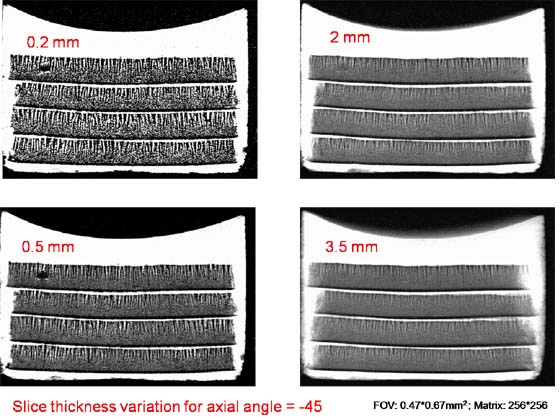Research Projects
Ceramics
Recent advances in ceramic technology have introduced the ability to produce controlled (tapered) pore structures in a variety of ceramic materials. The practical application of these porous materials in a tailored design setting requires an understanding over the connection between the pore structure and the transport properties relevant to the application of interest. The opaque nature of the ceramics coupled with the experimental complexity of measuring local transport and pore structure properties, suggest MRM to be well suited for the study of the ceramics. The research conducted in the last year used MRM from an observational perspective to gain insight into the steady movement of pressure induced fluid (Octane) through a tapered pore Zirconium disk. In addition, high resolution images of stationary water were taken to study the heterogeneity of the ceramic pore structure.
Foam
Nuclear magnetic resonance techniques were used to obtain the transport measurements of the steady, laminar flow of water through a foam structure. Three dimensional lattice Boltzmann simulations of a numerical foam geometry are used to support the NMR observations. The intrinsic transport length scale of the foam was identified strictly from the convective velocity field dynamics and could be rigorously expanded upon for identification of the transport length scale present within other cellular and hierarchal structures where the primary transport length scale is obscured by geometric complexity.

